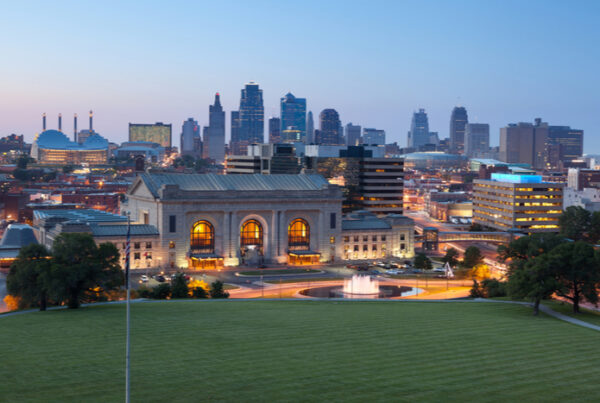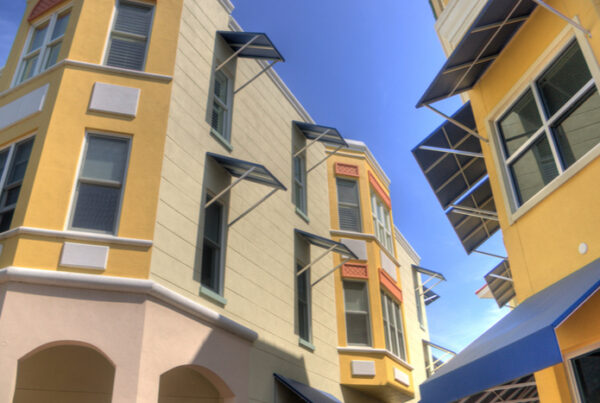The COVID-19 pandemic devastated local businesses throughout the United States, but also presented opportunities for cities to reenvision what they can do with unused space, 2021 ULI Virtual Spring Meeting participants heard at the session titled “Prioritizing the Public Realm in the ‘Next Normal’: Real Estate Strategies during COVID-19 and Beyond.”
“It has been very incredible how much the pandemic has accelerated things to become real that, for us, were theory before,” said Sherryl Muriente, manager of urban placemaking for the West Palm Beach (Florida) Downtown Development Authority. In West Palm Beach, she said, they employed an “urban acupuncture” solution, which uses small-scale interventions to transform and catalyze the larger urban context. “It’s about using low-cost solutions and making interventions scalable.”
She gave an example of West Palm Beach’s Dining on the Spot (DOTS) program. The program offered an emergency relief strategy that serviced 45 businesses in 12 downtown city blocks. The strategy created an environment in which people could feel safe to come back to local stores and restaurants and keep the vibrant downtown streets alive. Due to the DOTS program, one section of the city attracted three times more people staying on Saturday evenings in May and June of 2020 compared with December 2016. These changes, along with the data collected from surveys, led the city to create an ordinance making the changes permanent.
A similar situation played out in Denver. “Like many urban cores around the country, when the pandemic struck [Denver] shut down,” noted Jon Buerge, chief development officer of Urban Villages Inc., a development company based in that city. At Larimer Square, a collection of about 30 buildings in the heart of Denver dating from the 1800s, “tenants were not able to operate and were boarding up. But as we started to think creatively, like so many places we had to reset our way of thinking. We had to rethink how we partnered with our tenants, how to bring people back, and how to move into the future with the unknowns of the pandemic.”
The city and local businesses worked with the mayor and governor’s offices to find new ways to reopen. One of the outcomes was shutting down the street to allow for outdoor dining and giving people space while eating. A unique solution was the repurposing of an underused parking garage. The city and local businesses found that the top floor of the parking garage was underused, and it was turned into an urban garden and event space. One local restaurant even hosted movie nights, where they catered the food to hungry moviegoers, and Larimer Square partnered with Alicia Keys on a music video that was shown on CNN. The successes of Larimer Square have led to a rethinking of the area and how to support local businesses. “We showed the city that converting streets to public spaces can be a really positive thing if done in a thoughtful way.”
“What [our team] realized is that all of us were seeking that human interaction, all of us were craving conversation,” explained Mark Toro, chairman, North American Properties—Atlanta. “We were seeking to provide that safe place to commune.” Their properties, used to holding events that attracted up to 55,000 people, were virtual ghost towns due to the lockdowns that affected all of Georgia. While footfall decreased during the pandemic, due to configuration changes that allowed for more social distancing and safe outdoor activities, businesses still managed to bring more people to their properties than competitors three times their size in square-footage terms.
One of the most important things to consider, said Maggie Parker, managing partner and founder of Innovan Neighborhoods, a Dallas-based development and consulting firm, is making sure that these pandemic-related changes reflect the concepts of equitable development. “A lot of times when we have this great idea, we want to make change in neighborhoods, but it’s this flash thing that’s really cool, versus saying, ‘How does this idea become sustainable within the context of the neighborhood we’re preserving?’” The changes need to emphasize people, focusing on how the existing place can be honored while addressing the current racial inequities. “We always assume that community is just one thing. But how you define community, how you define those stakeholders, and really ensuring that you have a representative from businesses to local government to people who live in different neighborhoods, people with different abilities. Everyone’s perception of safety is very different, given what’s happened in our country, so how do we include that and think about a wide variety of stakeholders as we’re enacting different opportunities?”
“So, what’s next?” Buerge asked. “In our minds, it’s about permanent closures, it’s about rethinking streets, sidewalks, parking lanes, creating a more shared experience, and reprioritizing pedestrians and bikes over cars in our urban cores.”
“It’s not about the stores,” Tano said. “It’s about the stories.”


